How to fix parameter is incorrect error in Windows 11/10
Many Windows users have reported seeing an issue when they connect their external hard drives, pen drives or any USB storage media to the system. When they connect the external storage device to the system and try to access this device, they see an error message as shown below:
<DriveLetter>: is not accessible. The parameter is incorrect.
Possible causes of this problem are:
- virus contagion
- File system corruption
- Problematic USB drives
If you see this error on your system, don’t worry. In this article, we have collected possible solutions to overcome Parameter is incorrect error.
Solution 1 – Make sure the decimal symbol is used in the date and time settings
In certain cases, it is noted that the problem is due to the date and time format. If some other decimal symbol is used instead of a period (.), this error can be seen.
1. Open the Run With dialog box Windows + R.
2. Enter the command intl.cpl and press Get into.
3. From the window that opens, click the Additional settings button.
4. Make sure the decimal symbol is “.“. If not, then change it.”.” As shown below.
5. Finally, click on the OK button.

Solution 2: Run Chkdsk Scan on the drive
1. Open the To run dialog using Windows + R.
2. Type cmd and hold the keys Ctrl+Mayús+Intro at the same time. This should open the command prompt window with administrator privileges.

3. In the User Access Control window that appears, click the Yes button.
4. In the Command Prompt window that opens, enter the following command:
chkdsk <External_Disk_Letter>:/f/x/r
For example, if your external drive is listed as E, then the above command should be:
chkdsk E:/f/x/r
Solution 3: Run an SFC scan
1. Open the To run Terminal using the keys Windows + R.
2. Type cmd and hold the keys Ctrl+Mayús+Intro to open Command Prompt in Administrator mode.
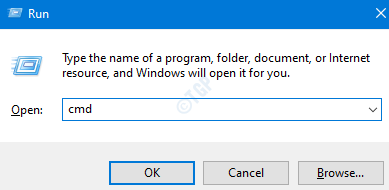
3. In the user access control prompt that opens, click And.
4. Type the following command and press Enter.
sfc/scannow/offbootdir=<External_Drive_Letter>: /offwindir=<Drive_Letter_Windows>:windows
where,
External_Drive_Letter – Drive letter that represents the external drive.
Drive_Letter_Windows – Drive letter where Windows is installed.
For example, if your external drive has drive letter D and Windows is installed in directory C, modify the above command as shown below:
sfc/scannow/offbootdir=D: /offwindir=C:windows
5. You should see a menu of options as shown below.

6. In the terminal, type the following command and press Enter.
sfc /scannow
7. Wait patiently until the scan is complete.
8. Once done, reboot the system.
Solution 4: Run a DISM scan
1. Open the To run dialog using keys Windows + R.
2. Type cmd and hold the keys Ctrl+Mayús+Intro to open Command Prompt in Administrator mode.

3. In the user access control prompt that opens, click And.
4. In the Command Prompt window that opens, enter the following command and press Enter.
DISM.exe /Online /Cleanup-image /scanhealth

5. Please note that it will take a few minutes to finish. Please wait patiently.
6. Once the scan is complete, reboot the system.
Solution 5 – Run a virus scan on the system
1. Open the Run Dialog holding the keys Windows + R together at the same time.
2. Enter the command ms-settings:windowsdefender and press it’s fine.
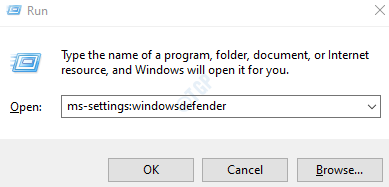
3. In the settings window, choose Protection against viruses and threats As shown below.
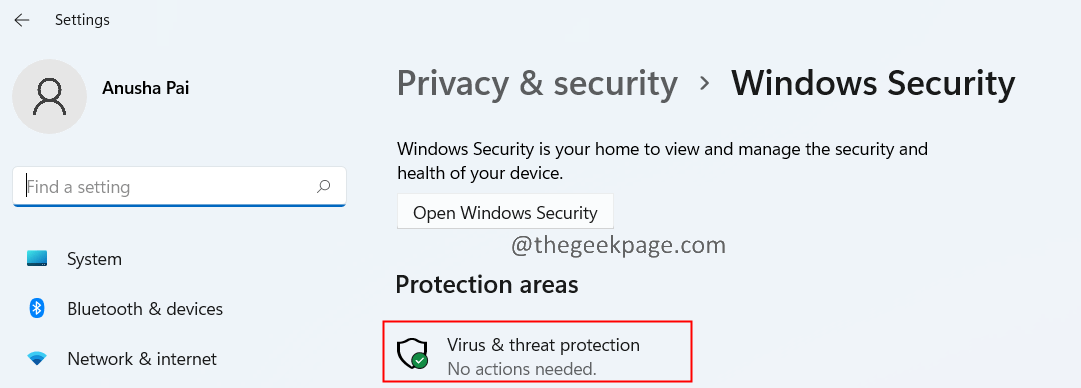
4. In the window that opens, click Scan Options.
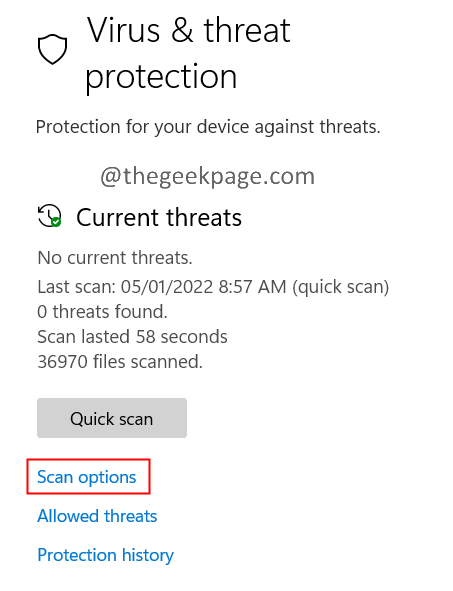
5. Choose Complete analisis and press the button scan now button.
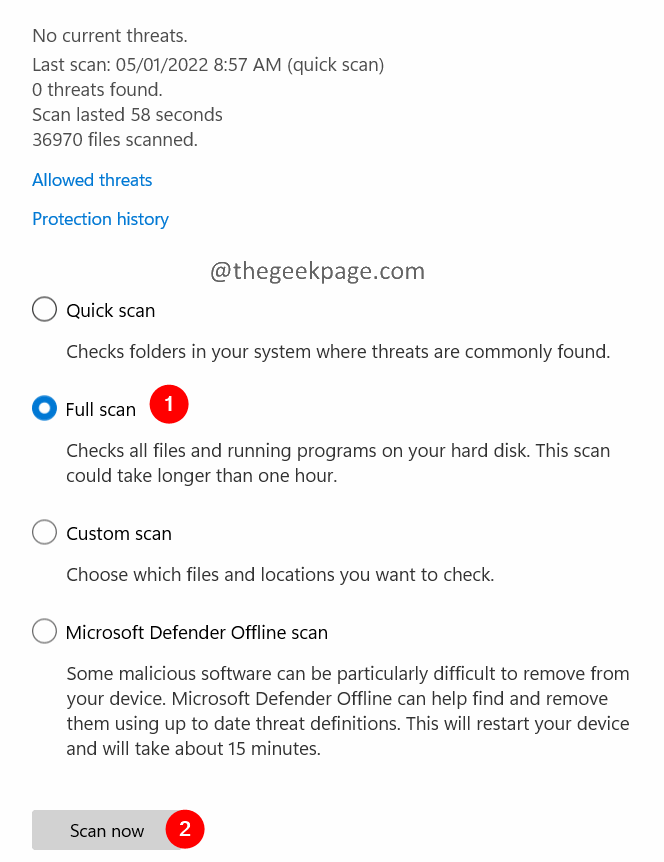
Solution 6: Reformat External HDD
If none of the above methods worked for you, this could mean that there is something wrong with the external USB drive. In such cases, you can format the drive. Please note that formatting the external hard drive deletes all content on the drive.
1. Open Windows Explorer using the keys Windows + E.
2. On the left side, click this computer.
3. Now, right click on the external device that you have connected.
4. Choose Format from the context menu.

5. In the Format window that opens, click the Start button.

Solution 7 – Update disk drivers
1. Open the Run dialog by holding down the keys Windows + r
2. Log in devmgmt.mscand hit OK

3. In the Device Manager window, double-click the drives.
4. Right click on the external drive that is causing the problem and choose update driver.

5. In the window that appears, click Automatically search for drivers.

6. You will be notified if any updated version of the driver is found. Follow the instructions on the screen to update the disk controller.
7. Reboot the system to see the changes.
We hope this article has been informative. Please kindly comment and let us know the solution that helped you solve the problem.
Thank you for reading.















